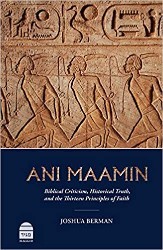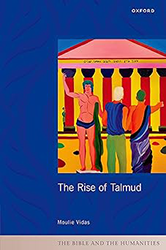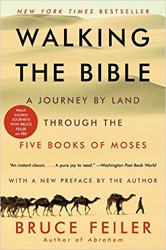When did Judaism begin?
What seems like a straightforward question is actually quite complex. For starters, what do we mean by Judaism? And once we have a definition, how do we actually go about determining the origin? How do we know when we’ve found it? Even for scholars who have studied Judaism their entire lives, these are not easy questions. In The Origins of Judaism, Yonatan Adler sets out to pin down some answers.
First, Adler narrows his focus to a specific definition of Judaism, one that emphasizes practices over beliefs. Whereas it is impossible to determine what people believe, Adler argues that it is possible — even if it is not easy — to determine whether people adhere to any of the common practices described in the biblical texts. He is not concerned with finding the origins of the Torah as a text, which most scholars suggest coalesced in the Babylonian and Persian periods. Nor is he concerned with the origins of the Judeans as a people, which likely took place in the Iron Age. Instead, Adler homes in on “when and how these Judeans, as a well-established collective, first began to adopt the Torah as the central regulating principle of their shared way of life.” This, for him, is the definition of Judaism.
To determine the when and how, Adler turns his attention to several practices, including dietary restrictions, ritual purity, prohibitions of figural art, tefillin and mezuzot, the sabbath, and festivals. His search begins in the first century CE, because there is an abundance of literary and archaeological evidence that, at that time, Judeans considered the Torah authoritative and followed these practices. From this baseline, he works backwards in time, looking at the archaeological remains and literary sources until there is no evidence of a particular practice. Such a method is known as a terminus antes quem—the time before which something must have been created. After examining the history of each of the practices, Adler concludes that the evidence “for a widely practiced Judean way of life governed by the Torah never predates the second century BCE.”
Adler’s conclusion is not as shocking as it might seem at first glance. In fact, early in the book, he discusses several scholars who have made similar arguments about the second century BCE being foundational for the development of Judaism and Jewish law. And in 2015, Michael Satlow, a Jewish Studies professor at Brown University, published How the Bible Became Holy (Yale University Press), which similarly argues that the laws in the Torah were not widely considered authoritative until the second century BCE. The Origins of Judaism does, however, make an important contribution to our understanding of early Judaism: it lays out archaeological and literary evidence in a way that is accessible to lay audiences and scholars alike.
But does the book identify the origins of Judaism? Not exactly. The problem might be that Adler’s definition is too narrow, precluding beliefs and practices that can’t be shown to directly relate to the laws found in the Torah. Indeed, in the final pages of the book, Adler dismisses evidence of Judean practices from the Iron Age and Persian period — including circumcision, veneration of YHWH as the deity, cultic worship of YHWH, and the celebration of Passover at Elephantine — as Judean cultural norms rather than Judean adherence to “some kind of Torah law.” A definition of Judaism that prioritizes the Torah to the exclusion of cultural and ethnic components of Judaism, however, is too limiting if we want to truly understand the development of Judaism throughout history.
This brings us back to the difficulty of finding origins of something like Judaism, which has been continuously developing for thousands of years. While one could argue that Adler’s book doesn’t find the origins of Judaism per se, it does do a wonderful job of identifying the earliest evidence of widespread adherence to specific laws found within the Torah. Which would of course be a terribly verbose name for a book.
Chad Spigel is a professor of religious studies at Trinity University in San Antonio and is the author of several scholarly publications, including “The Jewish Minority of Dura-Europos” (Journal of Ancient Judaism, 2019) and Ancient Synagogue Seating Capacities (Mohr Siebeck, 2012).





